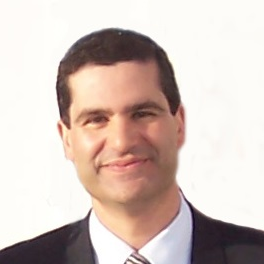Latest Trends in the Design of Hairpin Winding Machines for Transport Electrification Purposes
A special issue of Machines (ISSN 2075-1702). This special issue belongs to the section "Machine Design and Theory".
Deadline for manuscript submissions: closed (31 July 2023) | Viewed by 23218
Special Issue Editors
Interests: diagnosis and fault tolerance of electrical machines, power electronics and drives
Special Issues, Collections and Topics in MDPI journals
Interests: electromagnetic design and analysis of electrical machines; development of thermal management system of electrical machines for traction application purposes
Special Issues, Collections and Topics in MDPI journals
Interests: high-speed machines; novel materials and their applications to electromechanical energy conversion; traction machines
Special Issues, Collections and Topics in MDPI journals
Interests: electrical machines and drives; power electronics; power systems; wind power; electric vehicles
Special Issues, Collections and Topics in MDPI journals
Special Issue Information
Dear Colleagues,
The negative impact of combustion engines on global warming and greenhouse gas emissions enhances the demands for clean and green transportation systems and transport electrification at different levels—for instance, electric vehicles (EVs), electric aviation, and electric trains. The traction motors' demand metrics are mainly concentrated on high power density, high efficiency, cost-effectiveness, and light weight.
There are various ways to enhance the power density of electric motors. The most effective way to achieve high power density is increasing the slot filling factor. The practical option to achieve this target for traction applications is altering the conventional stranded winding with hairpin winding. In recent years, this winding approach has become a popular and common solution for electric motor traction applications, and various automotive manufacturers implement this winding configuration on their electric motors.
This is a call for papers for a Special Issue on the “Latest Trends in the Design of Hairpin Winding Machines for Transport Electrification Purposes”. This Special Issue will provide a forum for researchers and practitioners to exchange their latest theoretical and technological achievements and identify critical issues and challenges for future investigation in the design of electric machine drives using this winding configuration. The submitted papers are expected to raise original ideas and potential contributions to theory and practice. Topics include but are not limited to the following research areas:
- Various manufacturing techniques of hairpin winding;
- Design of innovative hairpin winding layouts;
- Design hairpin winding machines;
- Thermal management approaches for hairpin winding machines;
- Accounting and modeling AC winding losses in hairpin winding machines.
Prof. Dr. Antonio J. Marques Cardoso
Dr. Payam Shams Ghahfarokhi
Dr. David Gerada
Prof. Dr. Wen-Ping Cao
Guest Editors
Manuscript Submission Information
Manuscripts should be submitted online at www.mdpi.com by registering and logging in to this website. Once you are registered, click here to go to the submission form. Manuscripts can be submitted until the deadline. All submissions that pass pre-check are peer-reviewed. Accepted papers will be published continuously in the journal (as soon as accepted) and will be listed together on the special issue website. Research articles, review articles as well as short communications are invited. For planned papers, a title and short abstract (about 100 words) can be sent to the Editorial Office for announcement on this website.
Submitted manuscripts should not have been published previously, nor be under consideration for publication elsewhere (except conference proceedings papers). All manuscripts are thoroughly refereed through a single-blind peer-review process. A guide for authors and other relevant information for submission of manuscripts is available on the Instructions for Authors page. Machines is an international peer-reviewed open access monthly journal published by MDPI.
Please visit the Instructions for Authors page before submitting a manuscript. The Article Processing Charge (APC) for publication in this open access journal is 2400 CHF (Swiss Francs). Submitted papers should be well formatted and use good English. Authors may use MDPI's English editing service prior to publication or during author revisions.
Keywords
- Hairpin winding
- Electric motor
- Transport electrification
- Design
- Manufacturing technique
- Thermal management
- Modeling
- AC winding losses








